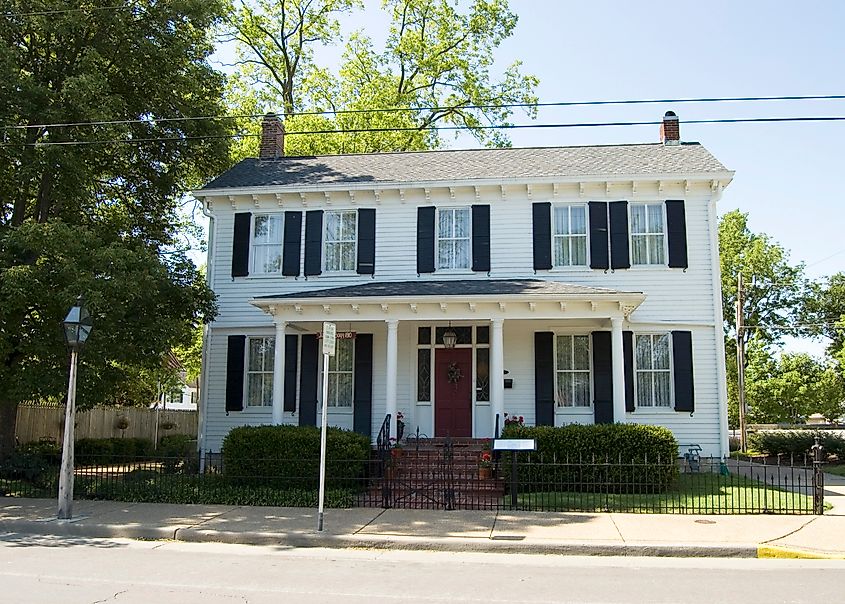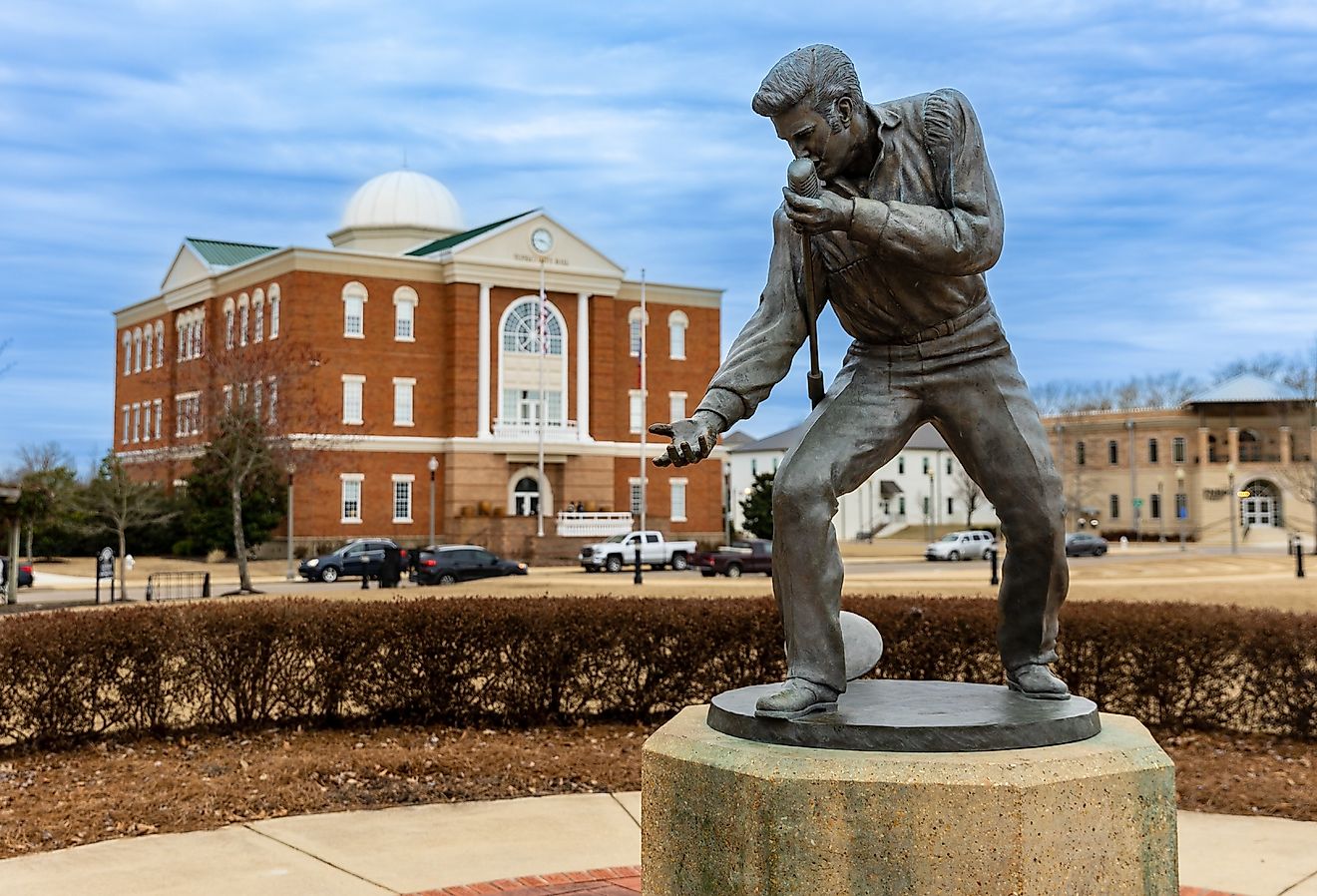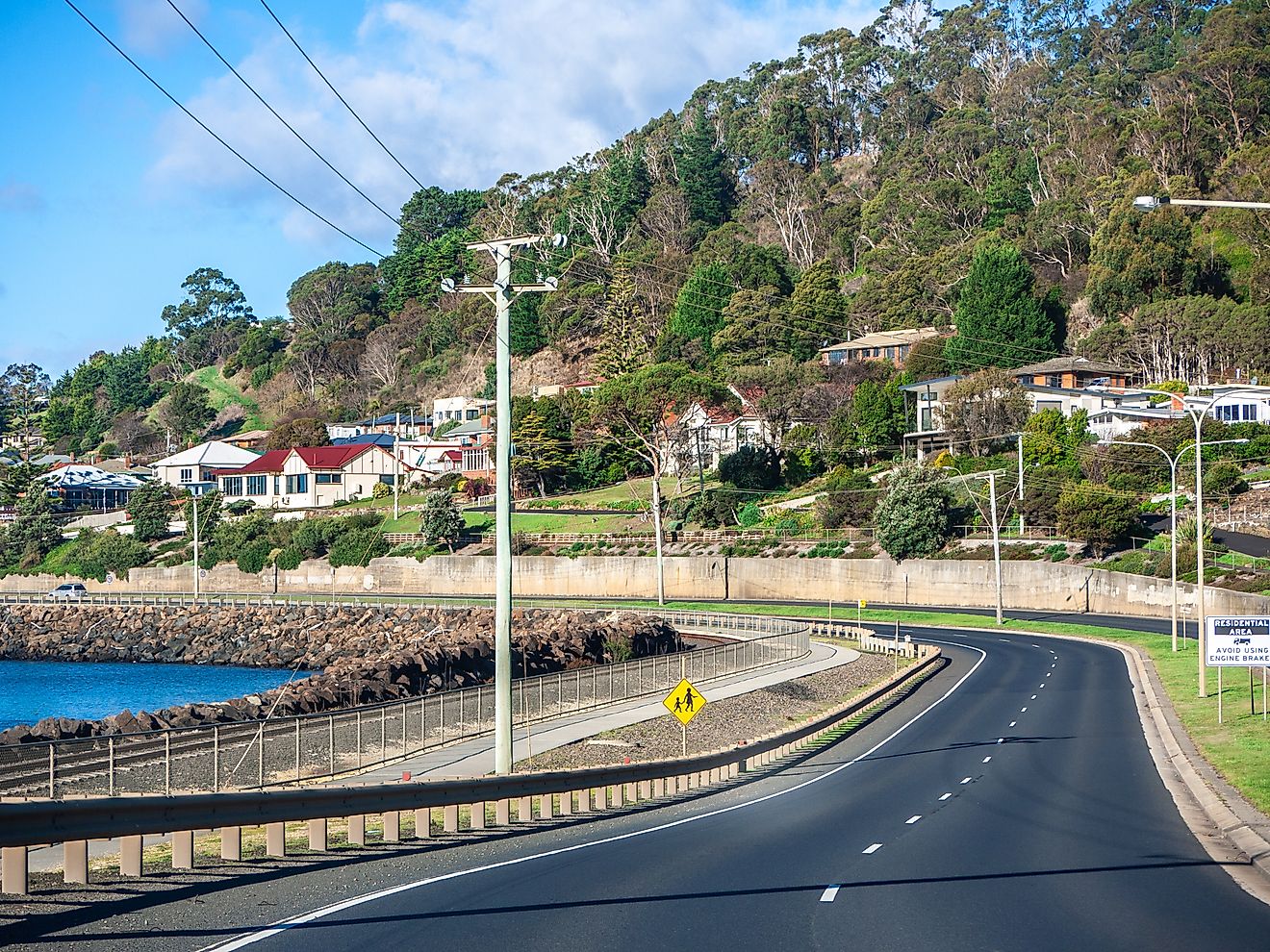
6 Storybook Towns In Missouri
With its European settlement history, homes of iconic American authors, and deep ties to the infamous Route 66, Missouri has endless stories to tell. Although centuries have passed since some of these stories unfolded, visitors can nonetheless step into the pages of Missouri’s history by exploring its well-preserved towns. Whether you are looking to step into the shoes of Tom Sawyer, an early French colonist, or are a traveler passing through, these six storybook towns will transport you to a different chapter of history.
Hannibal

As the childhood home of American author Mark Twain, Hannibal is the perfect destination to relive Twain’s classic stories. Visitors can learn about the author and his works by touring the Mark Twain Cave Complex, the state’s oldest cave and a major inspiration for The Adventures of Tom Sawyer, which is open year-round. Watch one of Twain’s works come to life at the Cave Hollow Theatre during a live performance. For hand-crafted chocolates and gelato, stop by the Chocolaterie Stam, a local and elegant European-style chocolate shop that has been in operation since 1913.
On December 13th, visitors can enjoy Hannibal’s Victorian Christmas event, set in the downtown district and featuring a variety of historic-inspired activities, including a historic holiday home tour, carriage rides, and performances by carolers.
Ste. Geneviève

Ste. Geneviève began as a French colonial settlement around 1735 and was one of the most important French communities in the region. Today, the town remains deeply influenced by its French colonial roots, largely thanks to the careful preservation of its 18th-century architecture. To experience original French colonial-style homes, visit the Beauvais-Amoureux House, a cedar log home from around 1792; the Felix Vallé House, an American-Federal style residence built in 1818; and the Bolduc & LeMeilleur Houses, constructed in the late 18th and early 19th centuries and furnished with period artifacts.
There is plenty to explore, just slightly outside of town as well. To view a variety of water bird species, spend an afternoon exploring Kaskaskia Island, less than a 20-minute drive from Ste. Geneviève is home to species including egrets, herons, and whooping cranes. The Hickory Canyons Natural Area is another popular outdoor attraction featuring 500 million-year-old Lamotte sandstone canyons that travelers can appreciate along a hike.
Parkville

Lying in a wooded area along the Missouri River, near limestone-carved bluffs, Parkville features a historic dining and shopping district dating back to the 19th century, creating a fairytale-like atmosphere. Downtown, visitors can enjoy a beer at the Craic Irish Pub, housed in a building dating back to 1927 that was formerly Parkville’s Post Office. For a vintage souvenir or gift, stroll through Parkville’s antique stores and boutiques, including La Bottega Vintage Market, Parkville Trading Post, and Cool Vintage Watches.
Parkville also has two nature sanctuaries and five parks to discover throughout the town. Parkville Nature Sanctuary is certainly worth the visit, a 115-acre wooded preserve with three miles of hiking trails that wind along waterfalls, springs, and a boardwalk. Pocket Park is a central and urban park, located in the heart of Parkville’s historic district, characterized by gardens, a colorful mural, a terrace, and benches to unwind.
Kimmswick

Kimmswick changed hands among several European powers, first controlled by the French and then the Spanish, before being sold to the United States in 1803. It was eventually settled by a German immigrant in 1859. Today, visitors can wander the peaceful 19th-century streets, home to buildings dating back to Kimmswick's founding in 1859. Travelers can start their tour at the Burgess-How House & Museum, the oldest log building in town, preserved and decorated as an 1850s farmhouse. The Historic Post Office is another charming stop, continuously operating since its establishment in the 1850s. Once situated along an old Spanish road in the late 18th century, the town’s history is commemorated at the El Camino Real marker in Jefferson Square Park.
For a taste of Kimmswick’s history paired with a glass of wine, visit LaChance Winery. Housed in a log cabin from around 1770, it operates as both a restaurant and winery, featuring live music on its patio from April through October.
Hermann

Settled by a group of German immigrants during the 19th century, Hermann today remains rich in German heritage, reflected in its culture and renowned vineyards. Much of this German heritage has been preserved at the Deutschheim State Historic Site, which is home to numerous 19th-century German homes and workshops, furnished with period furniture and artifacts. To experience the town’s famed German wineries, visit Hermannhof Winery, featuring historic stone cellars, mid-19th-century buildings, and a legacy of winemaking spanning centuries.
Hermann especially comes to life during December, when it rings in the holiday season in its historic German village district. Just a few of the activities taking place between December 19th and 22nd include a holiday concert by performers Nick Stoppel and Marques Ruff, a special Santa Rides The Rails event on the Missouri River Runner Express, and a guided holiday carriage tour of the town.
Carthage

Situated along historic Route 66, Carthage embodies the spirit of old-time Western America. Staying at the historic Boots Motel, visitors will feel like they are in a movie. The motel showcases Streamline Modern Architecture and preserves Route 66 history with details like a radio in every room. Carthage is also home to one of the last standing drive-in theatres in the country, continuing to operate between the months of April through October.
Also along Route 66 is Kellog Lake Park, spanning 22 acres and offering the perfect opportunity to kayak, fish, or picnic. Carthage Municipal Park is another outdoor alternative, serving as a community hub since the 1930s and featuring details such as a skating rink and outdoor amphitheater, both dating back to the park’s establishment decades ago.
Thanks to each of these town’s natural and historic preservation efforts, locals and visitors alike can appreciate the towns’ unique stories for years to come. Cascading waterfalls, majestic herons, old-timey motels, and ancient caves are just a few of the attractions that give these six towns a storybook charm. No matter what kind of story you want to jump into, Missouri has an immersive experience waiting for you.











